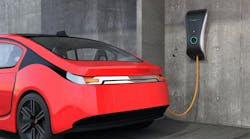There’s been increasing buzz lately around the “circular economy” – a term that essentially recycles the idea of cradle-to-cradle manufacturing principles where from original conception through disposal products are built with attention to how they will be reused, remanufactured, replaced and recycled to reduce the waste stream and keep the raw materials that went into the original product circulating in different forms. Few electrical manufacturers have embraced the idea openly, though there have long been murmurs about explorations along these lines in R&D labs behind the scenes.
Recently, consultants McKinsey & Co. have been reporting on how companies are embracing and applying the circular economy idea, and a recent thought piece on the subject comes from Frans van Houten, chief executive officer of Philips, who talks about how the idea is driving changes at Philips Lighting.
In our lighting business, for example, rapidly changing technology and the economic crisis made business and municipal customers reluctant to make big investments, because they felt uncertain. This led us to consider lighting as a service. After all, why do these customers buy light fixtures and luminaires? It’s not for the fixture but for the light itself.
For business customers, we therefore now sell lighting as a service: customers only pay us for the light, and we take care of the technology risk and the investment. In many cases, we also take the equipment back when it’s the right moment to recycle the materials or upgrade them for reuse. Similarly, for municipal customers we now have streetlight installations in Singapore and, more recently, a contract in Buenos Aires to replace the majority of the 125,000 existing streetlights there with LED luminaires over the next three years. We install the equipment, maintain it, and make sure that it runs for a very long time.
Other companies we’ve seen or heard of using this idea include Hendrix Wire & Cable and LED lighting manufacturer FineLite. It’s far too soon to say whether the cradle-to-cradle approach will become a central idea in electrical product manufacturing, but if forecasts of resource constraints and the increasing cost of waste prove out it may have an important role to play.








